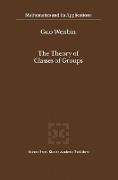- Start
- The Theory of Classes of Groups
The Theory of Classes of Groups
Angebote / Angebote:
One of the characteristics of modern algebra is the development of new tools and concepts for exploring classes of algebraic systems, whereas the research on individual algebraic systems (e. g. , groups, rings, Lie algebras, etc. ) continues along traditional lines. The early work on classes of alge bras was concerned with showing that one class X of algebraic systems is actually contained in another class F. Modern research into the theory of classes was initiated in the 1930's by Birkhoff's work [1] on general varieties of algebras, and Neumann's work [1] on varieties of groups. A. I. Mal'cev made fundamental contributions to this modern development. ln his re ports [1, 3] of 1963 and 1966 to The Fourth All-Union Mathematics Con ference and to another international mathematics congress, striking the ories of classes of algebraic systems were presented. These were later included in his book [5]. International interest in the theory of formations of finite groups was aroused, and rapidly heated up, during this time, thanks to the work of Gaschiitz [8] in 1963, and the work of Carter and Hawkes [1] in 1967. The major topics considered were saturated formations, Fitting classes, and Schunck classes. A class of groups is called a formation if it is closed with respect to homomorphic images and subdirect products. A formation is called saturated provided that G E F whenever Gjip(G) E F.
Folgt in ca. 5 Arbeitstagen




